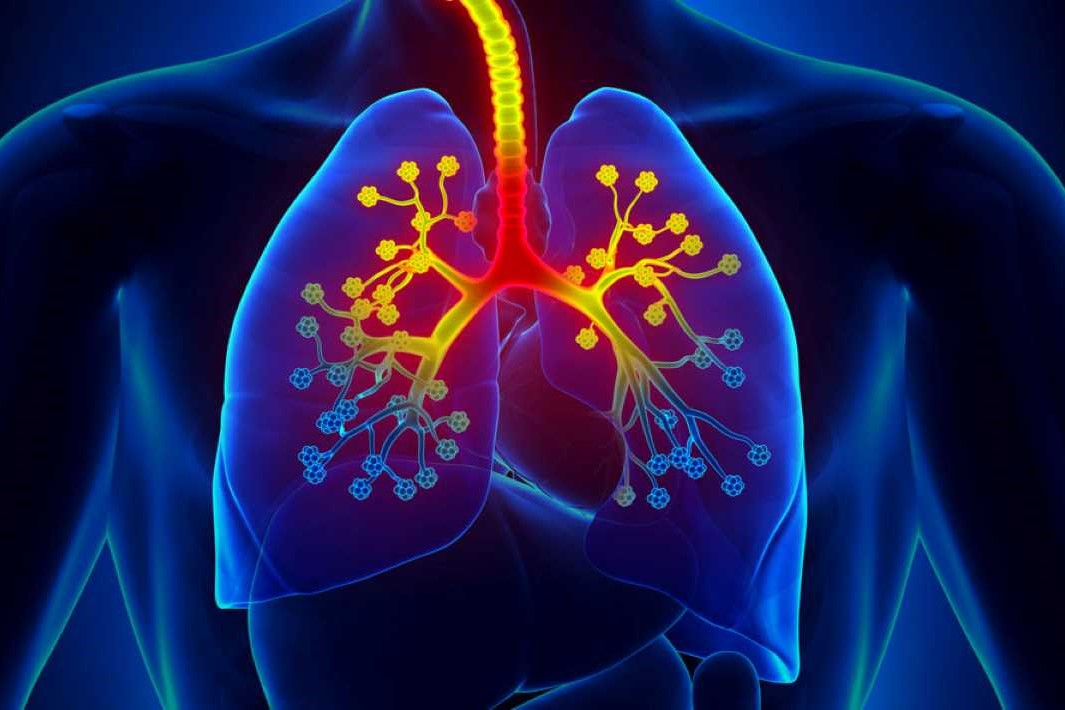
What are bronchiectasis? An overview
Bronchiectasis is a chronic respiratory disease characterised by an abnormal and irreversible dilatation of certain portions of the bronchial tree with a consequent loss of proper mucociliary clearance function
From a pathophysiological point of view, bronchiectasis disease is sustained by a vicious circle in which an alteration in mucociliary clearance is followed by chronic respiratory infections, chronic inflammation, and irreversible bronchial anatomical damage, which over time can lead to a progression and aggravation of the disease itself.
What are the causes of bronchiectasis?
Bronchiectasis can have several causes, either congenital or acquired, such as primary or secondary immune deficits, previous pneumonias, alterations in ciliary motility, fungal infections (such as from Aspergillus) or from non-tuberculous mycobacteria, autoimmune and chronic inflammatory processes.
However, in 40-50% of cases the cause of the disease remains unknown despite extensive diagnostic investigations.
What are the symptoms of bronchiectasis?
The main symptoms/signs of bronchiectasis are coughing, daily expectoration, and recurrent respiratory infections (including pneumonia).
In addition to these symptoms, episodes of haemophthisis/haemoptysis (blood in the sputum), dyspnoea (shortness of breath), persistent fever, and daily significant asthenia may also be present.
Diagnosis
The gold standard for the diagnosis of bronchiectasis is a high-resolution chest CT scan and the pulmonologist is the referral specialist.
At the time of the diagnosis of bronchiectasis and depending on the severity of the clinical picture, a series of laboratory tests should be performed, including quantitative assessment of total IgG, IgA, IgM and IgE immunoglobulins, IgG and IgE specific for A. fumigatus, protein electrophoresis, complete respiratory function tests, a sputum culture test for bacteria, fungi and mycobacteria, a visit with a respiratory physiotherapist and a pulmonologist.
Then, every six months or annually, and always depending on the severity of the clinical picture, it is recommended to perform a sputum culture examination, and a re-evaluation with a respiratory physiotherapist and a pulmonologist.
In some patients it is also important to rule out certain genetic disorders (such as cystic fibrosis or primitive ciliary dyskinesia) as well as the coexistence of possible connective tissue diseases (such as rheumatoid arthritis).
Treatments
There are to date no European or American approved drugs to treat this disease.
The management of bronchiectasis is totally individualised on the basis of the clinical and biological characteristics expressed by each patient.
The most important treatment is respiratory physiotherapy, which uses a specific exercise programme to remove the mucus that tends to stagnate in bronchiectasis.
Other important tools at our disposal are antibiotics, immunomodulatory therapies, bronchodilator drugs (if bronchial obstruction is present) as well as treatments to manage the two most frequent complications of the disease: flare-ups and the presence of blood in the sputum.
The optimal management of bronchiectasis passes through a multidisciplinary approach in which the pulmonologist, flanked by the respiratory physiotherapist, can count on the collaboration of other professionals including the clinical microbiologist, the radiologist, the clinical immunologist/rheumatologist, the geneticist, the gastroenterologist and the otorhinolaryngologist.
Read Also:
Emergency Live Even More…Live: Download The New Free App Of Your Newspaper For IOS And Android
Blind Insertion Airway Devices (BIAD’s)
Oxygen-Ozone Therapy: For Which Pathologies Is It Indicated?
Hyperbaric Oxygen In The Wound Healing Process
Venous Thrombosis: From Symptoms To New Drugs
What Is Intravenous Cannulation (IV)? The 15 Steps Of The Procedure
Nasal Cannula For Oxygen Therapy: What It Is, How It Is Made, When To Use It
Pulmonary Emphysema: Causes, Symptoms, Diagnosis, Tests, Treatment
Extrinsic, Intrinsic, Occupational, Stable Bronchial Asthma: Causes, Symptoms, Treatment
A Guide To Chronic Obstructive Pulmonary Disease COPD


